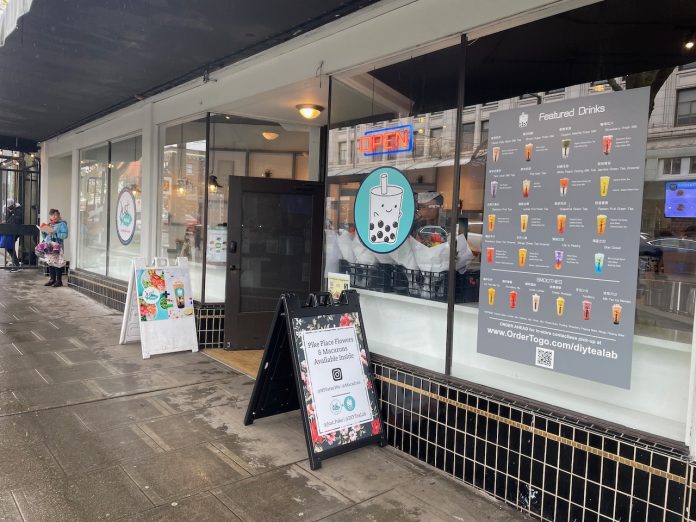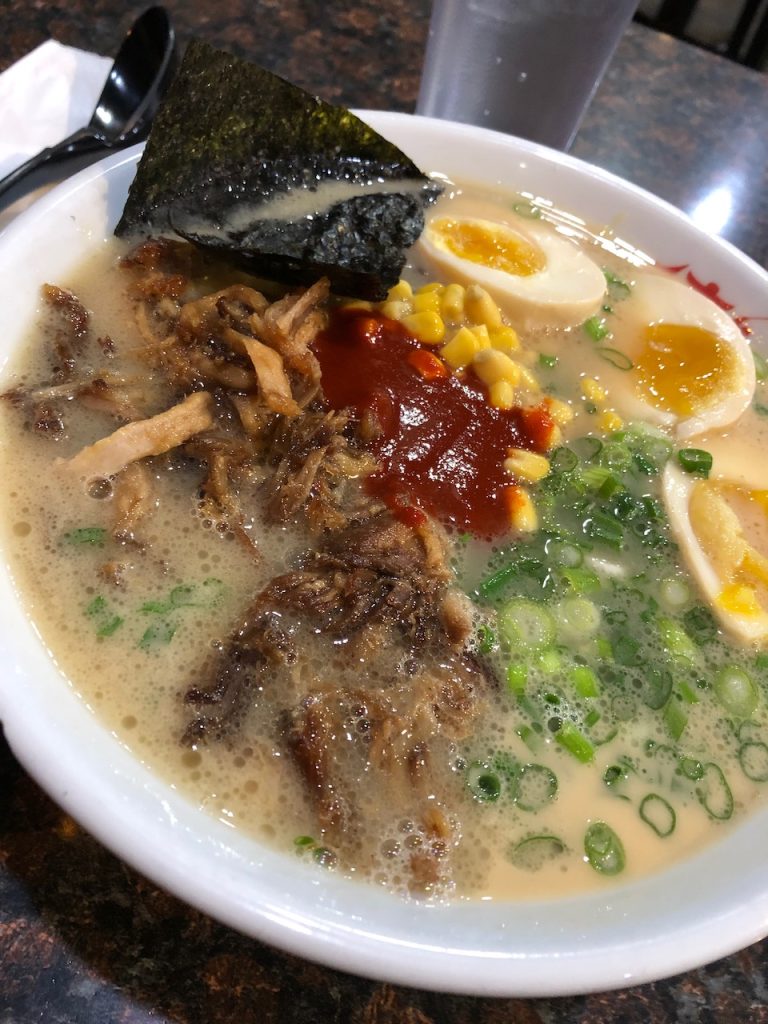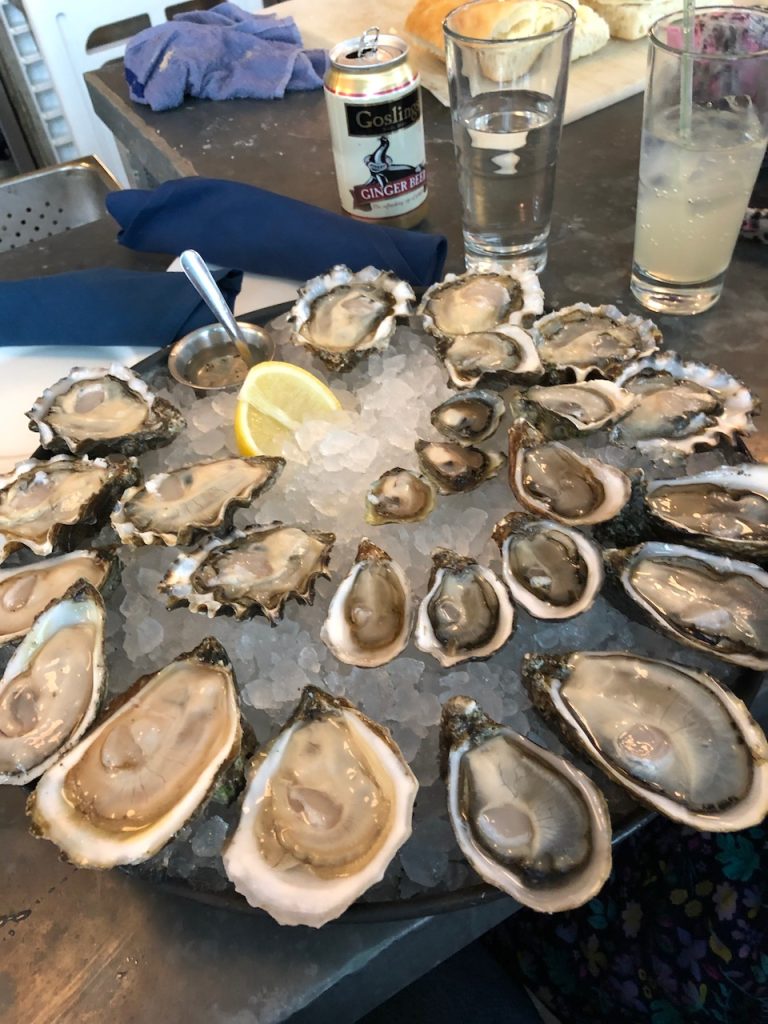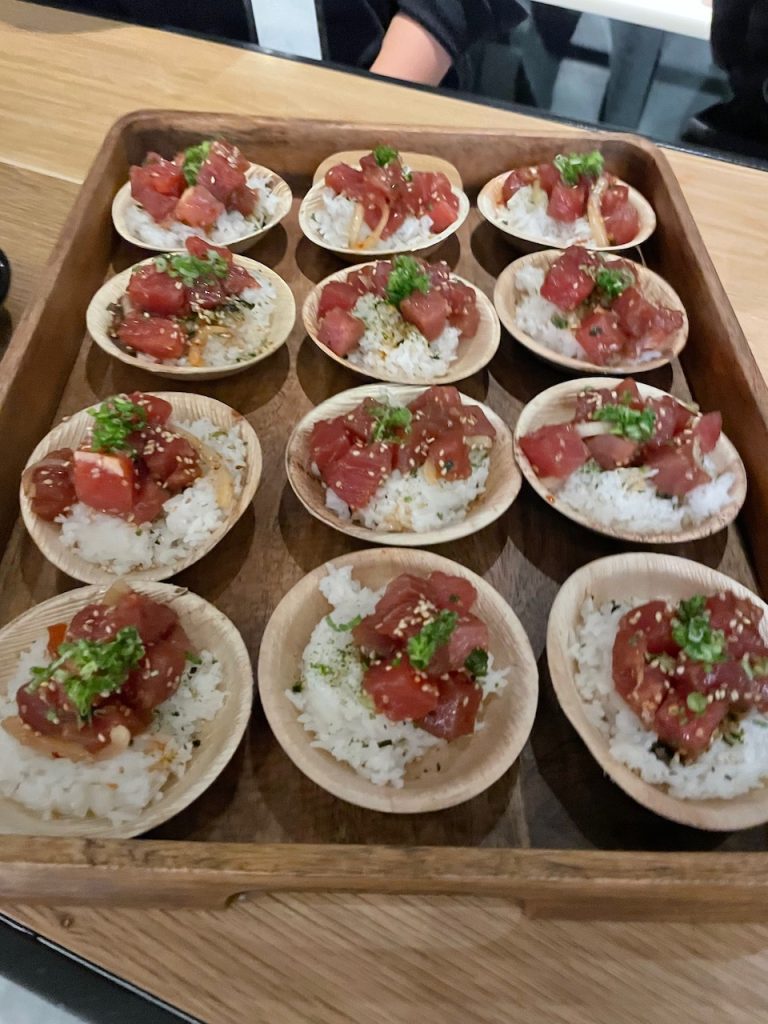
There was a time that Seattle’s complete neighborhoods were defined not by walkability or access to services, but by the quality of their cheap teriyaki lunch. The selection of sauced meats on a pile of rice with a spiral of veggies was a city staple and guaranteed filling meal, in a carry out divided plastic container.
Sure, there is still great teriyaki around town, but its day as the city’s primary lunch option feels past. Inflation and development have conspired to jack up the price of the lunch (still usually under the $20 level, to be honest) and knock out a ton of the spaces that used to have a hole in the wall for the shops to exist. But there’s also changing tastes, and a lot of folks aren’t looking for a half pound of rice to underpin their midday meal.
To think about what comes next, let’s consider what it means to be a go-to lunch. It has to be ubiquitous, with lots of places serving the cuisine. It has to be filling, because the worker man needs to make it to quittin’ time. And it has to be fairly cheap, unfortunately measured relatively these days with lunch prices somewhat erratic and high. There are a couple of candidates for Seattle’s next staple lunch.

Noodle Soups.
First up, we have a choice to make, with both options being delicious.
Pho, of course, has been a good and long-standing lunch citizen in Seattle. The Vietnamese dish, with thin rice noodles and thinner sliced meats served in a punch bowl of broth, covers the city. Whether the restaurant is a local gem or a local chain, pho is an easy to find lunch.
Recently, the number of ramen shops in town has boomed. This ain’t the packets of noodle bricks you ate to save money in the dorms. These are locally made noodles in the hardiest broths, topped with eggs and meats and mushrooms. And they’re everywhere. Probably the best indicator that ramen is having a moment is that we have an Iron Chef fronted noodle shop, and that’s not even the best one in town. (Not to say we’d ever turn down Chef Morimoto’s cooking.)
Really, if there is a contest between two excellent types of noodle soups for the love and adoration of the city, the real winner is the lunch eating public. The only thing holding back either pho or ramen from being a cheap lunch is that it’s damn near impossible to get out of the restaurant without appending the order and jacking up the price. Whether it’s garden rolls or takoyaki side dishes, the little add ons make the meal. Between the size of the lunch and tipping over a $20 threshold, it’s hard and slightly painful to hit noodles more than once a week.
Boba Tea.
As The Urbanist’s Shaun Kuo has reported, Seattle’s boba tea options are fantastic and growing (though not necessarily for the neighborhood’s benefit). Tea shops are popping up around neighborhoods, both residential and downtown, making the beverage ubiquitous. And though it can feel pricey for a beverage, it is extremely rare for a boba tea to cross the $7 level, much less double digits.
Now, is boba a good option for lunch? Does joy count in nutrition, because if so, it’s the best option. On the scale of liquid lunches, it’s probably better than three martinis and a fist full of bar nuts. But not much. It may come as a little surprise to some, but boba can be just as energy dense as a Frappuccino, with sugar, milk, and pearl combinations taking the calories up to the 600-700 range.
The only thing really holding back boba from being the city’s go-to lunch is that it doesn’t feel like lunch. It’s a treat on the way somewhere, or a side beverage when getting a main event. Watch what ends up happening is enterprising tea shops start putting protein or antioxidants in their boba pearls and start selling them as super healthy lunch options. This will be the city where it happens.

Chowder.
While many entries on this list are Americanized imports, we can recognize locally grown cuisine. Whether it’s based on smoked salmon or oysters or a mix of the fruits of the sea, Seattle does seafood chowders really well. It’s a dish that showcases local products and could be a great go-to lunch for the city.
Or at least we would if a good chowder was easy to get or cheap. The big name places in the market pay their rent with the long lines heading out the door. Long enough for residents to do once and only when visitors ask. Many other places crank up the chowder novelty by offering gut busting bread bowls, which are good in theory but not practice. Unfortunately, too many of the chowders themselves are pasty white gravy that was in the room with some fish. Putting it in a bread bowl is a carb-on-carb crime. The point of chowder is to stretch a small, flavorful protein with a thick broth and veggies, but you shouldn’t be able to flip the cup like a Blizzard.
Throughout the city, the really good chowders are sit-down places and boutique fishmongers, like Taylor Shellfish. Which is an astoundingly good restaurant, but neither ubiquitous nor inexpensive. Really, the issue is a testament to the overall preciousness of good oysters in Seattle. For as many bivalves that are raised in this region, it’s a shame we can’t put more of them on the counter for a hearty, cheap lunch in either soup or raw form.
Tacos.
BWAHAHAHAHAHAHA, no. Seattle’s not quite ready to make tacos its go-to cheapo lunch. The city’s selections of tacos and all central American foods have become markedly better over the last few years. Individual taco trucks and some neighborhood cornerstones have raised the bar. The fact that a lot of those taco trucks are now immobile with outdoor seating and awnings indicates the desire and need.
But Seattle still has a massive taco inferiority. The city spent years suffering from low-quality tacos. Moreover, there is the overwhelming chorus of relocatees who loudly and constantly beat on the quality of Seattle’s tacos. We understand that Taco Time is not the same level of authenticity as the taqueria next to your old house in Albuquerque, Tim. But the tots are good, it’s not the only taco place any more, and we don’t need to hear your taco monologue every day.

Poké.
Perhaps the most unlikely lunch contender, yet the one on the verge of a real breakout, is poké. The cuisine fits so many of the stereotypes of a local foundational lunch. We’ve imported poké from its fairly simple pacific island roots of fresh marinated fish and rice. Then we put a mainland spin on it, in the form of a Subway style fixin’s line where you can pile everything from sushi toppings to salad toppings to jugs of extra sauce.
The genius of the poké prep line is twofold. First, it overcomes the teriyaki rice problem, allowing people to gauge how much of a carb bomb they want in their bowl. Second, the extra veggies stretch the expensive protein without giving up the overall feeling of a pretty good value. A lot of satisfaction with food is based in the eyes, and a big, colorful bowl of fish and veggies is a feast.
What’s holding poké back from real breakout status is that it’s still raw fish. While plenty of us will eat raw fish in all of its delectable forms, there’s a lot of folks who balk at the proposition. It’s a balancing act, not unlike convincing the world they should buy a $5 cup of coffee every day. The bright clean space and on-site preparation offered by these new poké counters could be enough to welcome even the most timid eater. Whether that’s enough to make poké Seattle’s go-to lunch, we’ll have to wait and see.
Ray Dubicki is a stay-at-home dad and parent-on-call for taking care of general school and neighborhood tasks around Ballard. This lets him see how urbanism works (or doesn’t) during the hours most people are locked in their office. He is an attorney and urbanist by training, with soup-to-nuts planning experience from code enforcement to university development to writing zoning ordinances. He enjoys using PowerPoint, but only because it’s no longer a weekly obligation.

